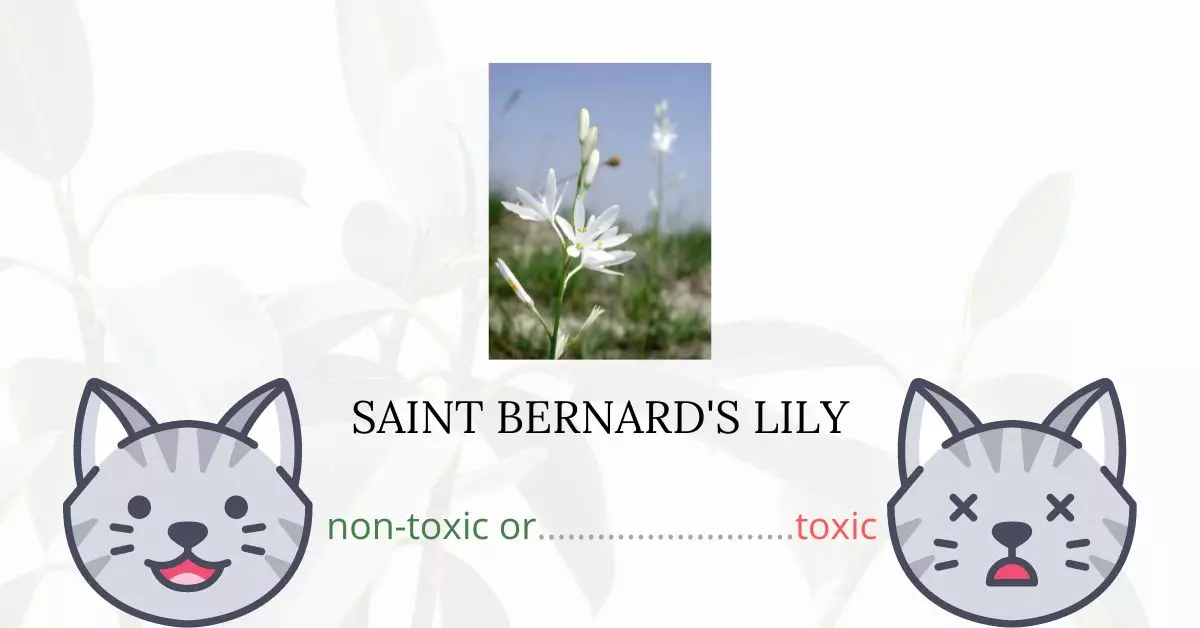No, Saint Bernard’s Lily is not poisonous to cats.
Collaborating closely with a team of experienced DVMs (doctors of veterinary medicine), we have carefully examined the potential risks associated with various plants, including the Saint Bernard’s Lily, and their effects on cats. Their expertise, combined with thorough research from high-authority websites like ASPCA and PetMD, confirms that there are no toxic elements in Saint Bernard’s Lily that pose a threat to our feline friends.
The ASPCA (American Society for the Prevention of Cruelty to Animals) even classifies this herbaceous perennial as a non-toxic plant for both cats and dogs. However, despite its safety, it’s always prudent to monitor your pets and discourage them from consuming plants.
Can Cats Eat Saint Bernard’s Lily?
Ingesting a small amount of Saint Bernard’s lily will not cause extreme harm to your felines. However, you should restrict them from eating too many plants (toxic or not) because they are carnivores.
Carnivorous species do not have the required enzymes to properly metabolize plant materials in their bodies. Thus, they end up experiencing indigestion when they consumed too many plants.
Additionally, you should be aware that some fertilizers, insecticides, and other plant-care products may leave toxic residues on plants. If your cat eats a specific portion of a contaminated plant, it could result in poisoning, which, depending on how much of the plant was eaten and how many toxic particles were ingested, could be fatal.
What is Saint Bernard’s Lily?
The St. Bernard’s Lily, or Anthericum liliago, is a perennial herbaceous plant that is indigenous to Turkey and Europe. It is a robust plant that belongs to the Asparagaceae family and usually grows in the wild in stony areas, open woods, and dry pastures.
The plant bears spike-like clusters of white, trumpet-shaped, star-like, 1.5-inch flowers with bright yellow anthers on two-foot stems that emerge from a cluster of narrow, grass-like, dark green leaves. The flowers bloom in the middle to end of spring and resemble lilies.
The specific name liliago means “like a lily” or “carrier of a lily.” It is not related to true lilies, as are many plants with common names that include the word “lily” in their names.
Saint Bernard’s lily thrives in average, medium-quality soil that is well-drained and receives direct afternoon sun, though it can also tolerate light, sun-dappled shade.
Keeping Cats Away From Saint Bernard’s Lily
You can experiment with various techniques to stop your cats from going near your plants, whether you have Saint Bernard’s lily or other plants at home.
To prevent your cat from digging around your plant, try covering the dirt with rocks. Additionally, by using this technique, water can more easily pass between the rocks and water the plants.
Cats dislike sticky materials, so you may try wrapping a layer of double-stick tape around each plant’s pot to keep their paws away. Citrus is also disliked by cats. Placing orange peels around your plants can act as a good barrier to keep your cat at bay.
Plants to Avoid For Your Cats
If you are a cat owner and unsure if the plants growing in your yard are harmful to your cats, check out this list of toxic plants for cats. You can also check our list of non-toxic plants for cats.





